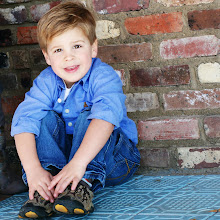
While Nana and PawPaw were visiting, they introduced us to a cool new hobby. Well, to say "cool" would be debatable. It was a HOT HOT week when they were here. We topped out at over 100 most of the days. So as early as we could get out the door, we were off letterboxing. Mom had located some maps in the pinehurst/southern pines area and we were "searching for treasure" as we told Jackson. The first location was at the Sandhills Community College Horticultural Gardens. If it hadn't been over 100 outside, it would have been a wonderful garden to walk around in but considering the heat, we were on a mission to find that box. Armed with mom's trusty myster bottle to spray us (when Lincoln wasn't drinking it), we searched and FOUND our first letter box. Try to ignore the sweat dripping from us in the photos of our find.

Throughout the week, we looked for a few more. One at Reservoir Park in Southern Pines. After a long walk, we discovered that the box must have been burned during one of the states control burns because after we followed all directions, the box was no where. Then we made another trip to Southern Pines and searched for one supposedly at our favorite park, Camelot. It wasn't there either but we had a good time playing on the playground. Then, late in the day, we made it to the Southern Pines train station where we found one of 2 in that area. We located the "black hole" just before dark. Mission Complete!

What is Letterboxing?
Letterboxing is an intriguing mix of treasure hunting, art, navigation, and exploring interesting, scenic, and sometimes remote places. It takes the ancient custom of placing a rock on a cairn upon reaching the summit of a mountain to an artform. It started when a gentleman simply left his calling card in a bottle by a remote pool on the moors of Dartmoor, in England.
Here's the basic idea: Someone hides a waterproof box somewhere (in a beautiful, interesting, or remote location) containing at least a logbook and a carved rubber stamp, and perhaps other goodies. The hider then usually writes directions to the box (called "clues" or "the map"), which can be straightforward, cryptic, or any degree in between. Often the clues involve map coordinates or compass bearings from landmarks, but they don't have to. Selecting a location and writing the clues is one aspect of the art.
Once the clues are written, hunters in possession of the clues attempt to find the box. In addition to the clue and any maps or tools needed to solve it, the hunter should carry at least a pencil, his personal rubber stamp, an inkpad, and his personal logbook. When the hunter successfully deciphers the clue and finds the box, he stamps the logbook in the box with his personal stamp, and stamps his personal logbook with the box's stamp. The box's logbook keeps a record of all its visitors, and the hunters keep a record of all the boxes they have found, in their personal logbooks.
What Do I Need to Hunt for Letterboxes?
At the very minimum you will need the clues. You should also have a personal stamp, inkpad, personal logbook, and a pencil (for writing in the box's logbook, if you want). Depending on the clue, you may also need a compass, map, or other tools. For my personal logbook, I use a hardbound unruled art sketchbook. I like the unruled paper because the stamp images look better. I also use a dye-based acid free ink; inkpads can be gotten at many art stores (preferred) or some discount department stores. Some people use multiple ink pads for a multi-colored effect, and some people use pigment-based ink. I prefer the dye-based as it dries faster and seems less messy, but this is all up to personal preference.
Where Do I Get the Clues?
In North America, where letterboxing is still developing, most clues are in the clue database at the Letterboxing North America (LbNA) web site, http://www.letterboxing.org/. Beyond that, getting clues themselves can be part of the game. Box hiders have no doubt come up with clever ways to transmit their clues beyond the simple publishing of them on the Internet, although at least in the US, that vast percentage of boxes have their clues published on the LbNA web site. Other sites may also publish some clues and sometimes clues are found at local outdoor retailers and clubs, such as Eastern Mountain Sports.
What's the Deal With the Personal Stamp?
The personal stamp is your personal mark that you leave in the logbook of each box you find. It is a rubber stamp that you either carve yourself or have custom made. Creating your personal stamp is of course part of the art; it's your signature in the letterboxing world. You would not typically buy an off-the-shelf rubber stamp to use as your personal stamp unless you were really anxious to get started, or saw something that was "you". Almost all personal stamps these days are hand-carved.
The personal stamp is your personal mark that you leave in the logbook of each box you find. It is a rubber stamp that you either carve yourself or have custom made. Creating your personal stamp is of course part of the art; it's your signature in the letterboxing world. You would not typically buy an off-the-shelf rubber stamp to use as your personal stamp unless you were really anxious to get started, or saw something that was "you". Almost all personal stamps these days are hand-carved.










FUN!!!
ReplyDeleteWe're gonna start geocaching when we head out to CA, the kids have done it with some friends and LOVE it.